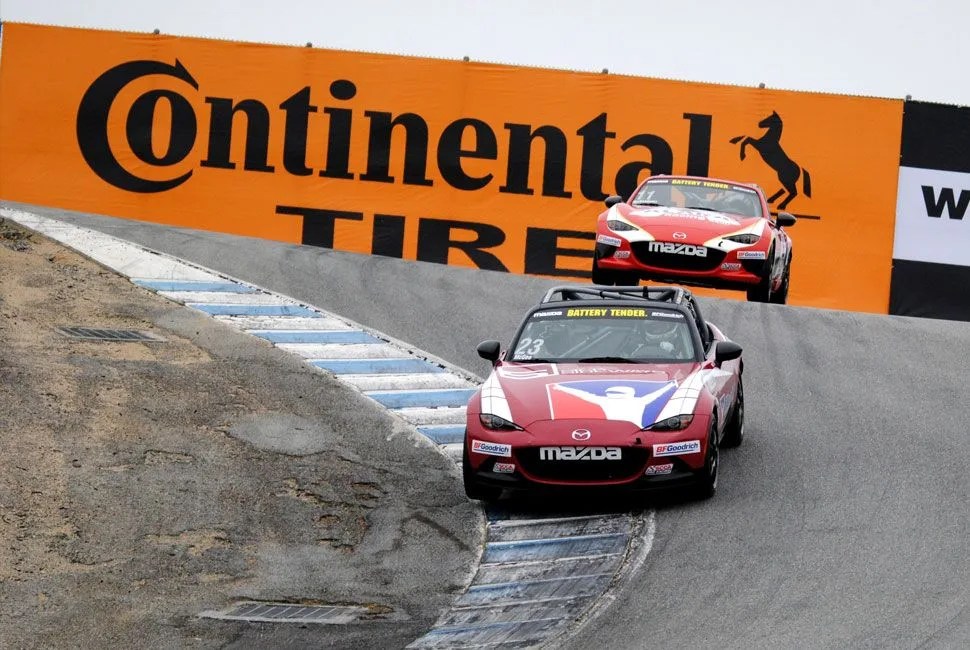For me, video games like Forza are an easy way to lose hours in front of a TV screen and ceremoniously lighten my colleague Henry Phillips’s wallet after hours at the office. For Glenn McGee, racing games were an innocent keystone of friendly hangouts, then an obsession, and are now the bedrock of his professional career. McGee worked up the ranks of iRacing, the online simulator, and its racing league, competing in and winning regional and national championships, sometimes with more than $30,000 on the line. He eventually earned himself the iRacing MX-5 Cup world championship, and with it an invite from Mazda to go head-to-head with other sim racers — in a real race car — in the Battery Tender Global MX-5 Cup.
But don’t think for a minute that McGee took the easy road to a pro race seat. Since getting into online racing is significantly more affordable and accessible than real racing, the talent pool is much bigger and it’s that much harder to excel. Though he had never participated in a real-world race before, online racing earned him a pro racing license. Now, on any given race day, McGee considers himself “the most experienced guy on track,” purely because he’s completed more races, albeit virtually. We sat down and asked him what it’s like to become the first person ever to go from professional sim racing to professional racing in real life.
Q: We’ll jump right in. How did you get into sim racing?
A: I started on consoles first, like most anybody who’s made it up to simulators. Eventually you kind of want something more serious, so in 2010 I went to iRacing, which is an online advanced simulator.
Q: And how does iRacing compare to, say, Gran Turismo?
A: It’s on another level, physics-wise, and certainly on another level, competition-wise — the races themselves are run in a more professional way. For instance, in the simulator you can’t go ramming into people, where on the console games you can kind of bang into people. In the simulator, your car gets dented and the suspension can get out of alignment, and there’s realistic weather, tire wear and tire physics.
In iRacing they model every single suspension aspect. It’s actually kind of crazy how they do it. So they have a computer model just for the tire, and that’s linked to a computer model that’s just for the suspension, and that all connects to the car itself, which also has its own computer model that controls chassis physics.
Q: When was that moment when you realized you were good enough to start sim racing professionally?
A: When I was playing on console games I started seeing that I was topping the lap-time charts online, and I used to beat up on my friends and thought, “Oh, I’m pretty good at this.” But it wasn’t until I started playing online, comparing my times, and realized I was doing better than most. I met a few of the really fast guys I was racing against, and they made the move to iRacing — all the best drivers went to iRacing — and I really liked the challenge, so that’s what made me follow along.
Q: So you’ve raced at the same circuits virtually and in reality. What are the differences?
A: Well, recently, at Watkins Glen, I had never seen the track in person, and on the first day I was the quickest guy out there. But I did about 1,000 laps on the simulator before going there. And it was the same situation at Road America. I’d never seen the track, but I did a week’s worth of training in the simulator and I was immediately one of the fastest guys when we first got on the track. And this is going up against pro drivers aged 40 or more.

